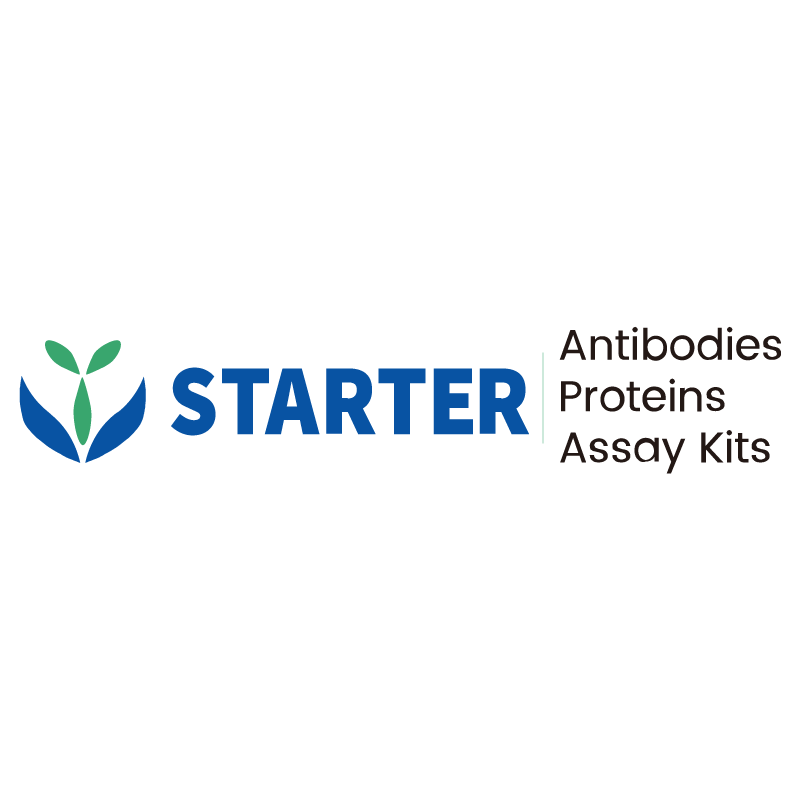WB result of SLFN11 Recombinant Mouse mAb
Primary antibody: SLFN11 Recombinant Mouse mAb at 1/2000 dilution
Lane 1: SK-OV-3 whole cell lysate 20 µg
Lane 2: DU 145 whole cell lysate 20 µg
Lane 3: A172 whole cell lysate 20 µg
Lane 4: Jurkat whole cell lysate 20 µg
Lane 5: K562 whole cell lysate 20 µg
Negative control: K562 whole cell lysate
Secondary antibody: Goat Anti-mouse IgG, (H+L), HRP conjugated at 1/10000 dilution
Predicted MW: 103 kDa
Observed MW: 100 kDa
Product Details
Product Details
Product Specification
| Host | Mouse |
| Antigen | SLFN11 |
| Synonyms | Schlafen family member 11 |
| Immunogen | Synthetic Peptide |
| Location | Nucleus |
| Accession | Q7Z7L1 |
| Clone Number | S-1565-283 |
| Antibody Type | Mouse mAb |
| Isotype | IgG1,k |
| Application | WB, IHC-P |
| Reactivity | Hu |
| Positive Sample | SK-OV-3, DU 145, A172, Jurkat, human tonsil, human esophageal carcinoma, human lung squamous cancer, human stomach |
| Purification | Protein G |
| Concentration | 2 mg/ml |
| Conjugation | Unconjugated |
| Physical Appearance | Liquid |
| Storage Buffer | PBS, 40% Glycerol, 0.05% BSA, 0.03% Proclin 300 |
| Stability & Storage | 12 months from date of receipt / reconstitution, -20 °C as supplied |
Dilution
| application | dilution | species |
| WB | 1:2000 | Hu |
| IHC-P | 1:400 | Hu |
Background
Schlafen 11 (SLFN11) is a protein encoded by the SLFN11 gene, belonging to the interferon-inducible Schlafen family. It is primarily known for its roles in antiviral defense, regulation of cellular replication, and its emerging significance in cancer biology. SLFN11 acts as an antiviral restriction factor by degrading specific transfer RNAs (tRNAs) through its endoribonuclease activity, thereby inhibiting viral protein synthesis, particularly in HIV-1 infections. In cancer, SLFN11 is associated with cellular sensitivity to DNA-damaging agents, including topoisomerase inhibitors, alkylating agents, and PARP inhibitors. High expression of SLFN11 correlates with increased sensitivity to these treatments, while its downregulation is linked to drug resistance and poor prognosis in various cancers, such as small cell lung cancer. Additionally, SLFN11 can induce apoptosis through ribosome stalling and the activation of innate immune responses when recognizing specific ssDNA motifs.
Picture
Picture
Western Blot
Immunohistochemistry
IHC shows positive staining in paraffin-embedded human tonsil. Anti-SLFN11 antibody was used at 1/400 dilution, followed by a HRP Polymer for Mouse & Rabbit IgG (ready to use). Counterstained with hematoxylin. Heat mediated antigen retrieval with Tris/EDTA buffer pH9.0 was performed before commencing with IHC staining protocol.
IHC shows positive staining in paraffin-embedded human stomach. Anti-SLFN11 antibody was used at 1/400 dilution, followed by a HRP Polymer for Mouse & Rabbit IgG (ready to use). Counterstained with hematoxylin. Heat mediated antigen retrieval with Tris/EDTA buffer pH9.0 was performed before commencing with IHC staining protocol.
IHC shows positive staining in paraffin-embedded human esophageal carcinoma. Anti-SLFN11 antibody was used at 1/400 dilution, followed by a HRP Polymer for Mouse & Rabbit IgG (ready to use). Counterstained with hematoxylin. Heat mediated antigen retrieval with Tris/EDTA buffer pH9.0 was performed before commencing with IHC staining protocol.
IHC shows positive staining in paraffin-embedded human lung squamous cancer. Anti-SLFN11 antibody was used at 1/400 dilution, followed by a HRP Polymer for Mouse & Rabbit IgG (ready to use). Counterstained with hematoxylin. Heat mediated antigen retrieval with Tris/EDTA buffer pH9.0 was performed before commencing with IHC staining protocol.


